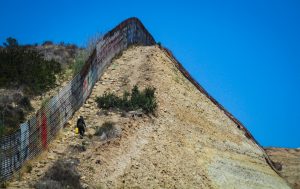
Tijuana, Mexico, Jun 12 (EFE).- For years and with the tolerance of municipal authorities, three families in the Tijuana municipality kept enlarging their homes, to the point they were up against the fence that divides Mexico from the United States, invading land that didn’t belong to them.
But now those residents of the exclusive Terrazas de Mendoza residential district are on a countdown to losing their dwellings, since in the next few days they must demolish those works or otherwise the authorities will do it as part of the project to replace the fence.
The local municipal government has the responsibility to enforce compliance with a presidential decree that establishes people’s right to pass along the area adjacent to the border fence, which in this region was built with waste from materials used by the United States during the Gulf War at the beginning of the 1900s.
The municipality notified the residents a month ago about their obligation to vacate the invaded land, the director of the Cultural Studies Department at the Frontera Norte School (Colef), Guillermo Alonso Meneses, told EFE.
Without yet becoming an international incident, the subject of land invasion is being pondered in both Washington and the Mexican capital.
This comes after the US Department of Homeland Security asked the Mexican Government to resolve the problem and proceed not only in this case but in two others that have been documented along 21 km (13 mi) of the border, where the present fence will be substituted beginning next June 18.
The families currently in question, whose names are not yet being made public, have refused to demolish their home enlargement works, and also refused EFE access to the exclusive section of this upper-middle-class housing development created in the late 1970s.
Unlike what happened in 1993 when the fence was erected, this time it won’t be the military that removes the existing structure 3-meters high and substitutes it with a tubular barrier 10 meters high and a depth of 2 meters underground, the engineer Roberto Espinosa Mora, local representative of the International Boundary and Water Commission (IBWC), told EFE.
Meanwhile, nothing will apparently save the residents of Terrazas de Mendoza from the US machinery removing the old border fence and, at a minimum, eliminating at least part of the home enlargements that have invaded United States soil.
